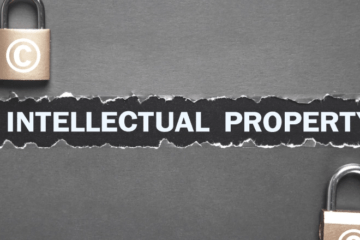
This article is written by Apurba Das, law graduate from Madhusudhan Law College, Utkal University, Odisha, an intern under Legal Vidhiya
Abstract
Copyright is legal protection granted to generators of certain types of workshops in recognition of their intellectual donation. The purpose of brand or copyright has always been to guard a creator’s interests while also propagating knowledge. Though this protection began with the acknowledgment of authors’ rights in their jottings, contemporary technology has unnaturally altered the nature of work and the means by which it’s exploited. A proprietor’s profitable rights allow him to benefit financially from his intellectual benefactions. Different rights are honoured depending on the nature of the work, according to Section 14 of the Copyright Act of 1957. According to this provision, the proprietor has the exclusive authority to perform or authorize the performance of the conditioning listed.
Keywords: Copyright, Section 14 of Copyright Act, Proprietor, Creator’s interest, Copyright act, Authorize.
Introduction
Copyright is a protection given to the generators of certain types of workshops as an acknowledgment to their intellectual input[1]. The ideal of brand has always been the protection of the interest of a creator, coupled with dispersion of knowledge. Though this protection started with the recognition of rights of authors in their books, but ultramodern technology has mainly changed the nature of work and its mode of exploitation. profitable rights allow a proprietor to reap profitable benefits from his intellectual creations. As per section 14 of the Copyright Act, 1957, different rights are recognised with respect to the nature of the work. As per this section, it’s the exclusive right of the proprietor to do or authorise the doing of the acts handed thereunder. The proprietor of brand work can induce wealth not only by exploiting it himself but also by participating it with others for collective benefits. This can be done by way of assignment or licensing of brand.
Assignment of Copyright (Section 18)
An assignment of brand is a legal sale in which the brand proprietor transfers all or some of their exclusive rights in the copyrighted work from one party to another. This transfer of power is generally done in exchange for payment. The brand assignment must be in jotting and inked by the brand proprietor. An assignment of brand can be transferred to another existent, company, or association. The assignment agreement sets out the specific terms of the transfer, including the duration of the assignment, the rights being transferred, and any other applicable vittles. It’s vital to note that the transfer of brand is an endless transfer of power, and the brand proprietor loses all rights to the work once the transfer is completed. The transferor must also notify the United States Copyright Office of the transfer within three (3) months of the assignment. It’s also worth noting that brand assignments can be complex. Any person considering an assignment of brand should look for professional legal advice to ensure that the sale is executed rightly and that each necessary terms are included in the assignment agreement.
The proprietor of the brand of a work has the right to assign his brand to any other person. The effect of assignment is that the attorney becomes entitled to all the rights related to the brand to the assigned work[2]. still, bare entitlement of right to publish and vend the copyrighted work amounts to publishing right and not assignment of brand.
In Video Master v. Nishi Production[3], the Bombay High Court considered the issue whether assignment of videotape rights would include the right of satellite broadcast as well. The Court agreed with the contentions of defendant that there were different modes of communication to the public similar as terrestrial TV broadcasting (Doordarshan), satellite broadcasting and videotape television. The proprietor of the film had separate brand in all those modes, and he could assign it to different persons. therefore, satellite broadcast brand of film was a separate right of the proprietor of the film and the videotape brand assigned to the complainant would not include this.
Mode of Assignment
As per section 19, assignment of brand is valid only if it’s in jotting and inked by the assignor or his properly authorized agent. The assignment of a brand in a work should identify the work and specify kind of rights assigned and the duration and territorial extent of similar assignment. Further, it should specify the quantum of kingliness outstanding, if any, to the author or his legal heirs at law during the continuance of assignment and the assignment will be subject to modification, extension or termination on terms mutually agreed upon by the parties. If the period of assignment isn’t mentioned it’ll be supposed to be taken as five times from the date of assignment. However, it’ll be taken as applicable in total of India, If the territorial extent of similar assignment isn’t quested. Also, Section 19(8) contemplates that the assignment of brand work against the terms and conditions on which rights have been assigned to a particular brand society where the author of the work is a member shall be void. Further, Section 19(9) and section 19(10) comment that the assignment of brand for making cinematograph film or sound recording shall not affect the right of the author to claim an equal share of the royalties and consideration outstanding with respect to use of his defended work.
In Saregama India Ltd v. Suresh Jindal[4], it was held that the proprietor of the brand in an unborn work may assign the brand to any person either wholly or incompletely for the total of the brand or any part thereof and formerly the assignment is made the attorney for the purpose of this Act is treated as the proprietor of the brand.
Disputes with respect to Assignment of Copyright
As per section 19A the Appellate Board may on the damage of a complaint from the assignor and on holding similar inquiry as it may suppose necessary, drop similar assignment, if the attorney fails to make sufficient exercise of the rights assigned to him, and similar failure isn’t attributable to any act or elision of the assignor. In case of a disagreement with respect to the assignment of brand, the Appellate Board may pass a suitable order on entering a complaint from the displeased party and after holding similar inquiry as it considers necessary including an order for the recovery of any kingliness outstanding.
Assignment by Operation of Law (Section 20)
When the proprietor of a brand dies the brand will pass on to his particular representative as part of the estate, handed that no will has been executed. Section 20 provides that if a person is entitled for brand under birthright and similar work has not been published before the death of the testator, unless contrary intention is shown under testators will or any appendix thereto, similar person shall be considered as having brand in the work so far as testator was the proprietor of brand incontinently before his death.
Licensing of Copyright
As the proprietor of copyright has an exclusive right within him, he may grant a license to do any of the act. The license can be classified into following categories:
Voluntary Licence (Section 30)
The author or the brand proprietor has exclusive rights in his creative work and he alone has right to grant license with respect to similar work. According to section 30 of the Copyright Act 1957, the proprietor of the brand in a work may grant any interest in his brand to any person by license in jotting, which is to be inked by him or by his properly authorized agent. A license can be granted not only in being work but also in respect of the unborn work, in this situation assignment shall come into force when similar unborn work comes into actuality. Where a designee of the brand in an unborn work dies before similar work comes into actuality, his legal representatives shall be entitled to the benefit of the license if there’s no provision to negative. The mode of license is like an assignment deed, with necessary acclimations and variations in section 19 (section 30A).
Thus, like an assignment, a license deed in relation to a work should comprise of following particulars:
- Duration of license
- The rights which have been certified
- Territorial extent of the certified
- The amount of kingliness outstanding
- Terms regarding modification
- Extension and termination
Voluntary License can be classified in following ways:
- Exclusive- The term exclusive license has been defined in Section 2(j) as a license which confers on the designee and persons authorized by him, to the rejection of all other persons, any right comprised in the brand work.
- Non-exclusive – It doesn’t confer right of rejection. It’s bare entitlement of an authority to do a particular thing which else would have constituted a violation. When proprietor grants an exclusive right, he denudes himself of all rights and retains no claim on the profitable rights so transferred.
- Co-exclusive – Then the licensor grants a license to further than one designee but agrees that it’ll only grant licences to a limited group of other agents.
- Sole license – Where only the licensor and the designee can use it to the rejection of any other third party.
- Implied license – Author impliedly allows or permits the use of his work. For illustration, he’d knowledge that someone is using his work but he didn’t take any action.
Compulsory License
Mandatory or Compulsory licenses are those which produce an impact on the identity of the designee and other party i.e., the proprietor who’s willing to do business on certain terms and conditions including payment of kingliness etc. In simple terms, an unjustified turndown to deal with a person is generally the cause of a mandatory licence. The owner retains certain rights of choice in terms of applying for acceptable licensing agreements with those he considers applicable, but is also allowed to determine the conditions of similar contracts without overdue detention. The vittles or provisions related to the conception of mandatory licensing are covered under Sec 31A & 31B of the imprints act.
Under Section 31A of the imprints act, if an author/proprietor of the work is set up to be dead or cannot be set up anywhere left untraced, also in similar case any person may file an operation before the imprints board seeking for licence to publish it. It’s important to note that the person who intend to file such an operation must publish his offer in one issue of a review in a particular language. Also, the operation must be filed in the specified form along with the applicable figure. On the other hand, under Section 31B of the imprints act, any person who’s working for the benefit of impaired persons grounded on profit may file an operation in the specified form before the concerned board seeking a mandatory license to publish any work in which power right prevails.
Statutory License
On the other hand, the conception of statutory license is different as it doesn’t concentrate on the conduct of the licensor. It attempts a noncommercial appropriation of proprietor autonomy, once the work fits within the broader class of workshop that can be so licensed.
There are presently 2 types of statutory licenses which are mentioned below:
- Cover interpretation recording license as contained under Section 31C.
- Broadcasting license as contained under Section 31D.
Difference Between Assignment and Licensing
- Under a licensing agreement, the proprietor of the work grants a license to use his work in a certain way but the power or title of the work vests with himself. On the other hand, in an assignment, the proprietor of the work transfers or assigns all the rights he possesses over the work including the work including the title.
- The conception of licensing permits long- term compensation & reversal of rights if it has been set up that the deal wasn’t profitable as it asked to be. In an assignment, there’s no similar compass for the reverse of title or the power as it stipulates payments to be made outspoken.
- A licensee is permitted to make differences to the extent that restrictions are assessed on him. Whereas, in an assignment making differences aren’t allowed as the complete rights of the proprietor are transferred to the assignee.
- Under the conception of licensing, there’s no demand for announcement. Whereas in an assignment, the attorney has to apply for a transfer of power. He becomes the proprietor of the work only after the register receives the operation comprising all the applicable information.
Benefits of Licensing:
- It potentially helps to enhance marketing.
- It helps to induce advanced earnings at lower cost of product.
- It helps in the marketable expansion of business. Through the process of licensing, introducing work in foreign requests are much more simplified.
- Investments are comparatively low but there are payments in return in the form of royalties.
- Flexible in nature as the parties are vested with the right to make differences depending upon the circumstances.
Benefits of Assignment:
- It helps to increase financial gain as the owner of the work can assign his complete power to a 3rd party for a lump sum consideration.
- It helps in mollifying risks and reduces costs.
- The assignment provides clarity about the power in case multiple parties claim power rights.
Conclusion
The term’ assignment’ and’ license’ are not interchangeable. An assignment is different from a license. Generally, in absence of any provision to the negative the attorney becomes the owner of the assigned work, whereas in case of a license the nominee gets the right to exercise particular rights only. An assignment may be general, i.e., without limitation or an assignment may be subject to limitations. It may be for the whole term of brand or any part thereof. An assignment transfers an interest in and deals with brand itself as handed under section 14 of the Act, but license does not convey the brand but only grants a right to do commodity, which in absence of license would be unlawful. An assignment transfers title in brand, a license simply permits certain goods to be done by nominee. The attorney being invested with the title in the brand may reassign[5].
Assignment & Licensing of Brand in India are regulated by the Copyright Act of 1957 and governed by specific sections on each medium. Licensing involves temporarily transferring some of the exclusive rights to a designee. In discrepancy, the assignment involves an endless transfer of all or some of the exclusive rights to an attorney. carrying professional legal advice before engaging in either medium and icing compliance with the Act and other applicable laws is essential. Copyright possessors should also precisely validate the terms of the agreement, including any payment terms, royalties, and deadlines for performance.
References:
1.Bare Act of Copyright Act, 1957
2. Law Relating to Intellectual Property Rights by V.K. Ahuja 3rd Edition
3. https://www.mondaq.com/india/copyright/854828/assignment-and-licensing-of-copyright – last visited on 25-09-2023
4. https://www.legalwindow.in/licensing-of-copyright/ – last visited on 25-09-2023
5. https://www.legalbites.in/category-intellectual-property-rights/copyright-assignment-and-licensing-949625 – last visited on 25-09-2023
6. https://lawbhoomi.com/assignment-and-licensing-of-copyrights-under-copyrights-act/ – last visited on 24-09-2023
[1] This is known as the ‘Doctrine of Sweat of the Brow’, whereby a work is given copyright protection if the author has applied ‘labour, skill or judgment’ in creating the work irrespective of the level of originality in the work. Evolved from the decision in Ladbroke v. William Hill, [1964] 1 All E.R. 465.
[2] Section 18(2) of the Copyright Act, 1957.
[3] 23 IPLR 388 (1998).
[4] 2007 (34) PTC 522 (Cal).
[5] Deshmukh & co (publishers) pvt ltd v. Avinash Vishnu Khadekar 2006 (32) PTC 358 (Bom).




0 Comments